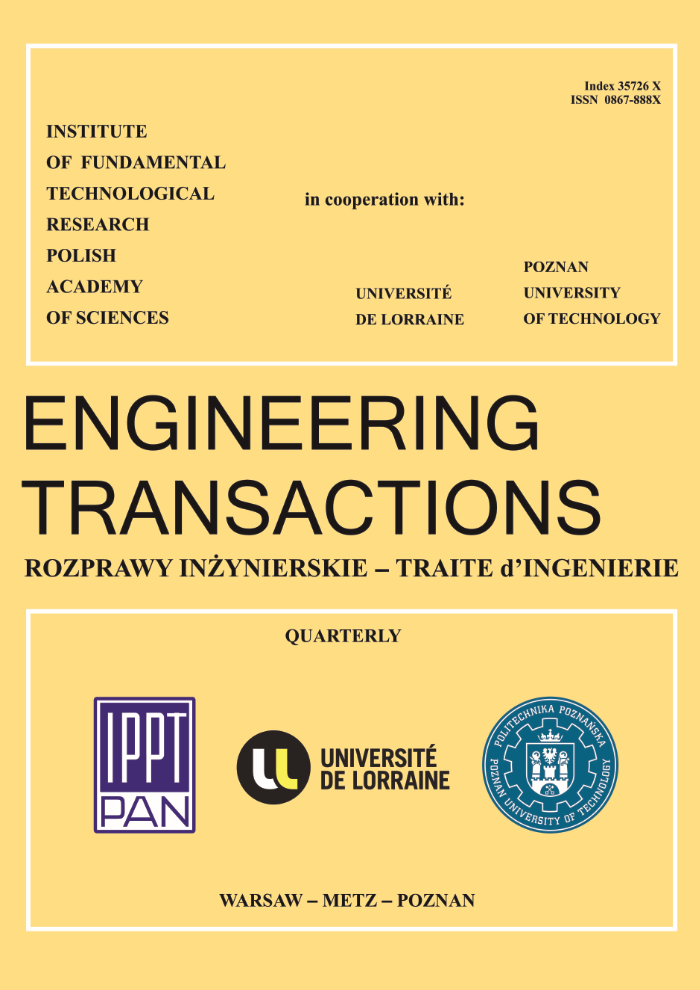Mechanical Response of HPFRCC in Tension and Compression at High Strain Rate and High Temperature
Abstract
The mechanical response of High Performance Fibre-Reinforced Cementitious Composite (HPFRCC) has been analyzed at high strain rates and high temperature. Two experimental devices have been used for compression and tension tests: the traditional Split Hopkinson Pressure Bar for compression and the JRC-Split Hopkinson Tension Bar for tension. The HPFRCC was thermally damaged at 3 temperatures (200°C, 400°C and 600°C) in order to analyze the dynamic behaviour of this material when explosions and fires took place in a tunnel. Results show that significant peak strength increases both in tension and in compression. The post-peak strength in tension depends on the thermal damage of the material. Its strain- rate sensitivity and thermal damage have been illustrated by means of a Dynamic Increase Factor. These results show that it is necessary to implement new expression of the DIF for the HPFRCC, therefore more and more accurate and experimental studies using Kolsky–Hopkinson Bar methods are needful.References
1. E. Cadoni, A. Caverzan and M. di Prisco, Dynamic behaviour of HPFR cementitious composites, [in:] Ultra-High Performance Concrete, Fehling, Schmidt and St¨urwald [Eds.], Proceedings of the 2nd International Symposium on Ultra-High Performance Concrete, Kassel, Heft 10, Structural Materials and Engineering Series, Kassel University Press, 2008, 743–750.
2. A. Caverzan, M. Colombo and M. di Prisco, High performance steel fibre reinforced concrete: Residual behaviour at high temperature, [in:] Proceedings of 2nd Workshop on Performance, Protection and Strengthening of Structures under Extreme Loading PROTECT 2009, Hayama, Japan, 2009, on CD ROM.
3. A. Caverzan, High Strain-Rate Uniaxial Tensile Constitutive Behaviour in Fibre Reinforced Cementitious Composites, Ph.D. Thesis, Politecnico di Milano, 2010.
4. E. Cadoni, G. Solomos and C. Albertini, Mechanical characterization of concrete in tension and compression at high strain-rate using a modified Hopkinson bar, Magazine of Concrete Research, 61, 3, 221–230, 2009.
5. E. Cadoni, A. Meda and G. A. Plizzari, Tensile behavior of FRC under high strain-rate, Materials and Structures, 42, 9, 1283–1294, 2009.
6. Comite Euro-International du Beton), CEB-FIP Model Code 1990, Redwood Books, Trowbridge, Wiltshire, 1993, UK.
7. A. Caverzan, E. Cadoni and M. di Prisco, Behaviour of advanced cementitious composites under dynamic loading and fire, In Proc. of International Workshop on Structures Response to Impact and Blast, Haifa, Israel, 15–17 November 2009.
2. A. Caverzan, M. Colombo and M. di Prisco, High performance steel fibre reinforced concrete: Residual behaviour at high temperature, [in:] Proceedings of 2nd Workshop on Performance, Protection and Strengthening of Structures under Extreme Loading PROTECT 2009, Hayama, Japan, 2009, on CD ROM.
3. A. Caverzan, High Strain-Rate Uniaxial Tensile Constitutive Behaviour in Fibre Reinforced Cementitious Composites, Ph.D. Thesis, Politecnico di Milano, 2010.
4. E. Cadoni, G. Solomos and C. Albertini, Mechanical characterization of concrete in tension and compression at high strain-rate using a modified Hopkinson bar, Magazine of Concrete Research, 61, 3, 221–230, 2009.
5. E. Cadoni, A. Meda and G. A. Plizzari, Tensile behavior of FRC under high strain-rate, Materials and Structures, 42, 9, 1283–1294, 2009.
6. Comite Euro-International du Beton), CEB-FIP Model Code 1990, Redwood Books, Trowbridge, Wiltshire, 1993, UK.
7. A. Caverzan, E. Cadoni and M. di Prisco, Behaviour of advanced cementitious composites under dynamic loading and fire, In Proc. of International Workshop on Structures Response to Impact and Blast, Haifa, Israel, 15–17 November 2009.






